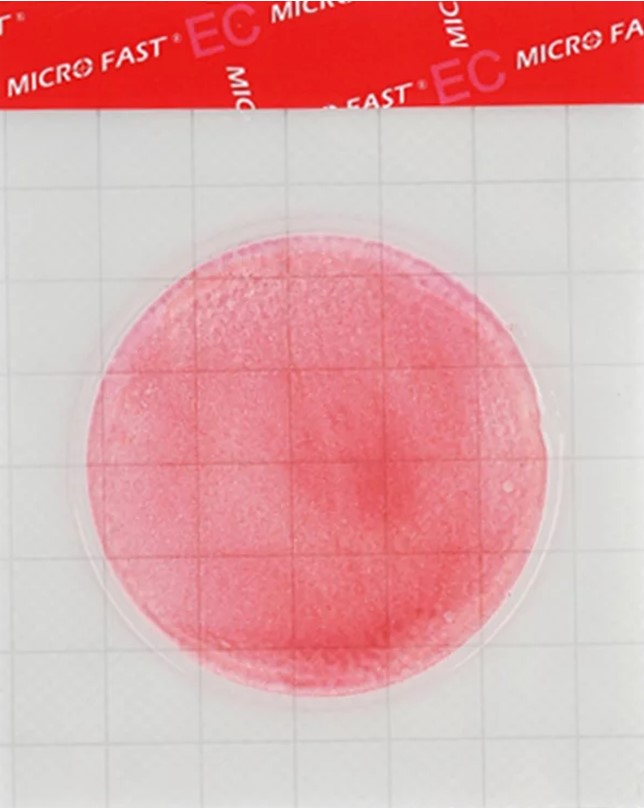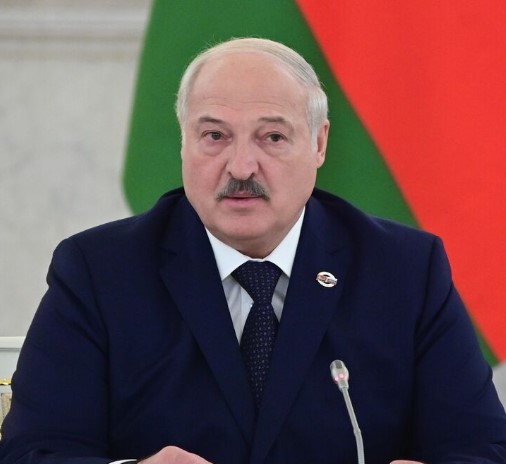A resident of the Vitebsk region talks about the traditions of remembering ancestors: they are the foundation of the family's strength.
Natalia Sokolova. Photo from personal archive. News of the topic: Some families honor their ancestors, even those who are distant, from generation to generation. Natalia Sokolova, a resident of the agrotown of Kopti in the Vitebsk district, told a BelTA correspondent that on Radunitsa and the day before, her numerous relatives gather at several cemeteries not only in the Vitebsk region but also in the Mogilev region to "communicate" with the souls of those who have passed on to the next world.
Natalia Sokolova noted that she has many relatives, and on Radunitsa Day, they visit several cemeteries. There are two in the Vitebsk district alone, one of which is located near the agrotown where she lives. "The oldest tradition is to roll Easter eggs in the shape of a cross , which is called 'shaking the cross with the departed ancestors.' Then the egg is crumbled onto the grave, and a spoonful of memorial kutia—a sweet porridge made from rice, raisins, and honey—is placed in it. Radunitsa, as we believe, is Easter for the dead, and in this way we share this great holiday with them , thanking God for the eternal life of the soul," Natalya shared.
She explained that at the cemetery in Kopti, the family only performs traditional rites and sets the memorial table at home, since it's nearby. At another, more remote cemetery, a table with benches is set up next to the graves, where those gathered place the food they brought and remember those buried there.
The Kopti resident also noted that the graves of relatives are usually tidied up before Radunitsa. For several years in a row, she tried planting fresh flowers in the cemetery on the day of remembrance itself, but either the soil wasn't suitable, or someone was digging up the perennials—in short, it didn't work, and she abandoned the idea. Now, like everyone else, she and her relatives bring artificial flowers.
Natalya Sokolova explained that in her family, traditions are passed down from generation to generation, the significance of which might seem incomprehensible to modern eyes. One such tradition is observed in the Bykhov District of the Mogilev Region, where sisters, brothers, aunts, and uncles from all over Belarus gather. The cemetery, located next to the E95 highway, a few hundred meters from the turnoff to the agrotown of Obidovichi, can accommodate up to 20 people at a time from the Vitebsk, Mogilev, Gomel, and Smolensk regions. "We have about 20 graves in this cemetery, and another dozen in the cemetery in Obidovichi itself. Our aunt Nadya Ropot said there are up to three crooked birch trees there, which is a significant portion of the cemetery. Our maternal ancestors are buried here—our great-grandmother, grandmother, grandfather, and several others from even earlier generations whose names we don't even know," Natalya noted.
On Radunitsa, women prepare traditional attributes—sew small aprons and towels. They tie the aprons to crosses placed on women's graves, and the towels to men's graves. "That's how we do it at the cemetery in the Bykhov district. In the old days, back in the late 19th and early 20th centuries, our relatives lived in this area. My great-grandmother and grandmother had large families. Back then, they didn't place stone slabs with names and photographs on graves like they do now, but marked them with crosses and aprons with towels to identify whether a man or a woman was buried there. Sometimes, children died of illness in infancy , and a small apron or towel was tied to the crosses on their graves. This tradition wasn't started by us, but we will continue it and pass it on to the children," explained a resident of the agrotown of Kopti.
In the Bykhov district, the ritual of greeting the departed is also observed, but there is a difference. "There, we place a towel on the grave and roll a painted, church-blessed egg across it. In the Bykhov district, there were no tables near the graves, so after rolling the eggs on the towels, a ritual meal was laid out and the departed were remembered. The tradition of covering the graves with towels and rolling the eggs has remained, but now people eat at the table," Natalya Sokolova emphasized.
She also noted that some dishes are slightly different. While rice kutia is traditional in the Vitebsk district, in Bykhov it's sita. "It's honey water with small pieces of kulich, which is eaten first—before other dishes," said a resident of the Vitebsk district.
Her sister, Elena, from Vitebsk, also traditionally gathers to commemorate their ancestors, along with her husband and 13-year-old son. "We pass on the tradition of remembering deceased ancestors to our children, showing by our example that family is something unshakable. When we pass away, someone will need to look after our graves and the graves of our loved ones—both in the Vitebsk region and in Mogilev," she said.
The sisters shared that visiting the graves of deceased relatives is more than just a tribute to tradition. "We absorbed this practically with our mother's MILK. These traditions are the strength of our family. If we do not remember our ancestors, both near and distant, then who are we? Their blood flows through us, and we are part of this shared history. I believe that the foundation of a strong family is its cohesion, its ability to help, and to stand up for one another. And the souls of our ancestors are our spiritual protection before God," Natalya Sokolova expressed her opinion.
Alesya PUSHNYAKOVA, BELTA.
Natalia Sokolova noted that she has many relatives, and on Radunitsa Day, they visit several cemeteries. There are two in the Vitebsk district alone, one of which is located near the agrotown where she lives. "The oldest tradition is to roll Easter eggs in the shape of a cross , which is called 'shaking the cross with the departed ancestors.' Then the egg is crumbled onto the grave, and a spoonful of memorial kutia—a sweet porridge made from rice, raisins, and honey—is placed in it. Radunitsa, as we believe, is Easter for the dead, and in this way we share this great holiday with them , thanking God for the eternal life of the soul," Natalya shared.
She explained that at the cemetery in Kopti, the family only performs traditional rites and sets the memorial table at home, since it's nearby. At another, more remote cemetery, a table with benches is set up next to the graves, where those gathered place the food they brought and remember those buried there.
The Kopti resident also noted that the graves of relatives are usually tidied up before Radunitsa. For several years in a row, she tried planting fresh flowers in the cemetery on the day of remembrance itself, but either the soil wasn't suitable, or someone was digging up the perennials—in short, it didn't work, and she abandoned the idea. Now, like everyone else, she and her relatives bring artificial flowers.
Natalya Sokolova explained that in her family, traditions are passed down from generation to generation, the significance of which might seem incomprehensible to modern eyes. One such tradition is observed in the Bykhov District of the Mogilev Region, where sisters, brothers, aunts, and uncles from all over Belarus gather. The cemetery, located next to the E95 highway, a few hundred meters from the turnoff to the agrotown of Obidovichi, can accommodate up to 20 people at a time from the Vitebsk, Mogilev, Gomel, and Smolensk regions. "We have about 20 graves in this cemetery, and another dozen in the cemetery in Obidovichi itself. Our aunt Nadya Ropot said there are up to three crooked birch trees there, which is a significant portion of the cemetery. Our maternal ancestors are buried here—our great-grandmother, grandmother, grandfather, and several others from even earlier generations whose names we don't even know," Natalya noted.
On Radunitsa, women prepare traditional attributes—sew small aprons and towels. They tie the aprons to crosses placed on women's graves, and the towels to men's graves. "That's how we do it at the cemetery in the Bykhov district. In the old days, back in the late 19th and early 20th centuries, our relatives lived in this area. My great-grandmother and grandmother had large families. Back then, they didn't place stone slabs with names and photographs on graves like they do now, but marked them with crosses and aprons with towels to identify whether a man or a woman was buried there. Sometimes, children died of illness in infancy , and a small apron or towel was tied to the crosses on their graves. This tradition wasn't started by us, but we will continue it and pass it on to the children," explained a resident of the agrotown of Kopti.
In the Bykhov district, the ritual of greeting the departed is also observed, but there is a difference. "There, we place a towel on the grave and roll a painted, church-blessed egg across it. In the Bykhov district, there were no tables near the graves, so after rolling the eggs on the towels, a ritual meal was laid out and the departed were remembered. The tradition of covering the graves with towels and rolling the eggs has remained, but now people eat at the table," Natalya Sokolova emphasized.
She also noted that some dishes are slightly different. While rice kutia is traditional in the Vitebsk district, in Bykhov it's sita. "It's honey water with small pieces of kulich, which is eaten first—before other dishes," said a resident of the Vitebsk district.
Her sister, Elena, from Vitebsk, also traditionally gathers to commemorate their ancestors, along with her husband and 13-year-old son. "We pass on the tradition of remembering deceased ancestors to our children, showing by our example that family is something unshakable. When we pass away, someone will need to look after our graves and the graves of our loved ones—both in the Vitebsk region and in Mogilev," she said.
The sisters shared that visiting the graves of deceased relatives is more than just a tribute to tradition. "We absorbed this practically with our mother's MILK. These traditions are the strength of our family. If we do not remember our ancestors, both near and distant, then who are we? Their blood flows through us, and we are part of this shared history. I believe that the foundation of a strong family is its cohesion, its ability to help, and to stand up for one another. And the souls of our ancestors are our spiritual protection before God," Natalya Sokolova expressed her opinion.
Alesya PUSHNYAKOVA, BELTA.





























































